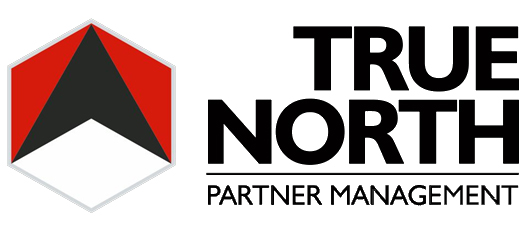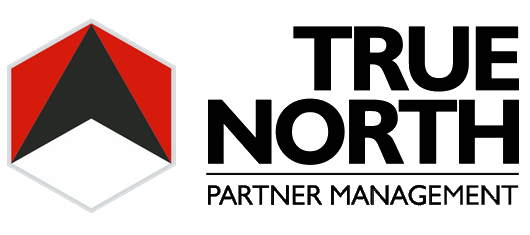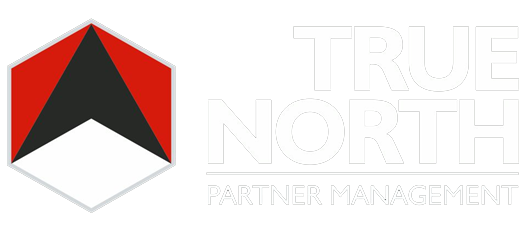The following post originally appeared on Forbes | September 8, 2014
A review of BigLaw’s history proves a somewhat obvious, but when viewed through a certain lens, sobering matter: client lifetime value (CLV) is exceedingly high. This sword has two edges.
Preceding the last 10-15 years, the asymmetry of information between the legal consumer and provider was so large that most-if-not-all major consumers heavily relied on relationships to decide upon, and value, legal purchases. The gap has narrowed in recent years, however, as major law firms have been the branches from which corporations and banks and other large-scale entities have been plucking their increasingly-savvy GC’s. But with even the smartest of consumers making purchasing decisions, there will always be an information gap that arises from the credence nature of legal services.
If you haven’t considered the following question before, consider it now: How can a legal consumer really tell if they’ve made their best, most effective purchase? In litigation, for instance, many attorneys consider “winning” to be the mark of client satisfaction. But even in a bet-the-farm litigation—e.g., jail time is on the line—wins can be scrutinized: Was the client dragged through the mud more than necessary? Were more relationships damaged than necessary? Did the client pay more than necessary to get the win? Could the client have been better positioned after the close?
Questions like these, more often than not, cannot be answered in an objective way. Functionally-relevant information is often scarce-to-nonexistent, and where functional information is scarce, consumers all too easily fall back on biases and heuristics: multiple source effect, information cascades, Veblen goods effect, positional goods effect, conformity, perversions of professional identity, and more.
When we cut to the core, what we have are two phenomena pulling at each other:
One, increasingly-savvy clients that are armed with liberalization and/or unbundling rights are being prodded along by intense economic pressures to make changes in their purchasing strategies.
Two, despite the legal consumers’ brand new britches, the ever-present lack of objectively-interpretable feedback and data dictates that they can rarely declare a win, a true “win,” forever condemning them to a classic Hobbesian trap: The devil they know or an excursion into the surrounding limbo of ambiguity.
In practice, this dilemma has caused consumers to consolidate and optimizing their provider lists and/or venture out of the warm and embracing bosom of long established relationships to find more suppliers. And while these shifting dynamics have created an opening for firms to generate new business without purchasing it laterally, it is damn hard to get one’s foot in the door; it is even harder to win enough business to gain critical mass once in; it harder yet to win it without dropping one’s pants and forever destroying the profitability structure of the new relationship.
With this in mind, one of the most pressing questions I’ve fielded over the years by law partners is “How can I get more business?” That is, as you can imagine, a loaded question—silver bullets are for werewolves, not business development. A great place to start a quest for more business is, without a doubt, in understanding the mind of the legal consumer. And who better to provide this perspective than one of the industry’s foremost authorities on the subject: Dr. Silvia Hodges Silverstein, lecturer, author, and researcher on law firm management and legal procurement. See our exchange below:
Parnell: Can you tell us a bit about your background? Talk to us about your research.
Hodges Silverstein: I focus on purchasing decisions in the legal industry, in particular legal procurement. I research, teach, and speak on these topics, as well as metrics, in the legal market, and more generally, law firm management and change in law firms.
I have been studying client purchasing decisions for over a decade, including my PhD on the topic, and have been focusing on legal procurement over the last six years. It is a fast-growing area! I just founded a legal procurement association, the Buying Legal Council, and also teach law firm management at Columbia Law School and Fordham Law School.
I continue to be fascinated by this topic and co-authored two Harvard Business School cases: “GlaxoSmithKline: Sourcing Complex Professional Services” and “Riverview Law: Applying Business Sense to the Legal Market.” I also authored a number of books and numerous articles on law firm management, including the legal procurement book “Buying Legal: Procurement Insights and Practice,” of which I was the author and editor, and the article “I didn’t go to law school to become a salesperson,” which I wrote for The Georgetown Journal of Legal Ethics.
Parnell: Can you describe the evolution of the average legal consumer over the past 10-15 years?
Hodges Silverstein: Speaking about the corporate legal consumer, this market has become a buyers’ market in that time frame. Law firms added expensive capacity to meet robust demand, and then the demand for high priced legal services tumbled in the recession. Not every segment was hit equally hard, but companies decided that “commodity” legal work needed to be done more cost effectively. The companies, en masse, decided to apply procurement principles to the acquisition of law service. It is rooted in cost pressure that comes from the client’s top management and requires the legal department to act upon it.
Many of today’s legal clients shop around and consolidate the number of firms they work with. They demand more value for their legal budget and financial accountability from the law firms they hire. Many firms experience the increased pressure, and as a consequence, clients have an easier time to get costs down and to dictate the terms. It has become more Darwinian: Successful firms have responded with automation, low cost labor to least complicated problems, and locating law talent to less costly markets. The day of the multi-million dollar legal bill with no explanation has come to an end.
Corporate clients also have become much more sophisticated buyers who better understand their needs. This is due to increasingly-available comprehensive legal information on the Internet as well as companies employing former private practice lawyers who understand how law firms work, where money can be saved, and how more value can be created. With the rising influence of procurement among large companies, many law firms have become providers of legal services rather than trusted advisors. The data explosion has made it easier to make tough and wise choices.
Parnell: How would you describe the asymmetry of information between the consumer and provider? Is it still large? Is it small? Does it only arise in particular niches?
Hodges Silverstein: The legal sector has matured from a relatively inefficient market with great asymmetry of information and little information regarding price or quality or efficiency of service, to an increasingly-robust and efficient market with lots of information and sophisticated clients. The result is a client that demands efficiency and accountability. We also see an increasing use of formal competitive processes and changed expectations in terms of service. Some believe that it also caused diminished client loyalty. It is a fact occurring in many professional services firms, including law, consulting, advertising, and accounting. The client wants to know how much it costs and why and how can it be done for less.
Parnell: So, with diminishing loyalty in mind, can you talk to me a bit more about the value of client relationships in the modern market?
Hodges Silverstein: Client relationships remain important, but for many, the type of relationship has changed. In the last few years, some law firms have become providers of legal services rather than trusted advisors. Many firms used to have historic clients that hired them time and again. There was little vetting and control. If there was any more formal purchasing process, it was about clients picking firms that could provide the right type, scope, scale, and importance of the matter to the client, as well as which individual lawyer within those types of firms the client wanted to work with: What was the lawyer’s personality? Was there trust? A prior relationship perhaps? Or positive word of mouth?
Today clients still mix objective and subjective elements in their choice of law firms, and clients still want to be sure whether the firm is able to do the work. In addition, they look at the firm’s numbers, their numbers, and competitors’ numbers, and compare and benchmark to see whether working with the firm makes good business sense. In other words, the business side has increasingly more weight than the purely-relationship side.
Some say that long-term relationships marked by mutual loyalty between lawyers and clients have broken down. I wouldn’t go that far, but caution that law firms should no longer rely on building relationships, but have to be able to also argue with numbers, proving that working with them also makes good business sense.
There are tiers in the world of legal and segments of the market that are less competitive — thing “bet-the-company” type work. There, it is still largely based on relationship and proven expertise. But it is 10 percent of the market that moves in the private market, and 90 percent that is now exposed to tough-nosed competition.
Parnell: What resources do consumers normally use today when researching their providers?
Hodges Silverstein: Legal procurement and operations professionals use analytics and benchmarking information. This includes information on what different firms charge, how much time they use for different phases of a matter etc., to detailed information on judges’, lawyers’, counter-parties’ behavior etc. Some information is available for purchase by software providers and consulting companies, other information has to be built patiently by the clients themselves. Rankings are also still part of the mix of resources, but perhaps do not carry the same weight as before.
Parnell: How, specifically, are consumers measuring a firm? Reputation, bill rates, attorney caliber?
Hodges Silverstein: In the past, clients had to rely on anecdotal and piece-meal information on firms’ reputation, quality, rates, etc. Rankings, deal lists, and similar tables used to be the way to “measure” firms. Today, U.S. clients have more sophisticated, analytical ways to measure and benchmark firms. Legal spend management analytics zero in on rates, hours, and staffing. By measuring reputation, success rates are becoming more statistically robust as well.
The next wave of measurement is based on cost-based outcomes. There will soon be a day where firms will be judged on how much it costs to win, and what win rates have they delivered.
Parnell: Can you elaborated a bit more on the role prestige or reputational capital play in this market?
Hodges Silverstein: Reputation is still important. Firms need to be clear about what they stand for in terms of what benefits the clients seek: Cutting-edge expertise in the most complex matters, or efficiency and success in bread-and-butter matters? Clients always want to be sure they made the right choice. However, there are now many firms with good reputations and many firms with high skill levels. Within these firms, they are carrying more capacity than they can sell at premium prices. It is this overhang of capacity that makes for interesting marketing.
Parnell: You’ve spoken of legal procurement a number of times. Can you talk a bit more about what entities are involved in today’s purchasing decisions? What are their roles, specifically?
Hodges Silverstein: On the client side, GCs and the legal department continue to drive the purchasing decisions. They typically initiate them and short-list which firms should be taken into consideration. They also typically make the final decision as to which firm will be chosen.
What’s different is that today legal procurement is often involved in the sourcing of legal services as well. They are responsible for price and contract negotiations, as well as for the engagement letter, retainer, or framework agreement. They are also influencers and affect the outcome of a decision with their opinions. Another common role for legal procurement professionals is that of the “gatekeeper”: Legal procurement professionals control the flow of information from the firm to the decision makers, but they are less likely to be decision makers themselves, and rarely do they make the final decision about which firm to choose or have the ability to veto a decision.
Parnell: How are consumers measuring “value?” Or how are they defining “value?”
Hodges Silverstein: Value can be many things. For some, value is low price, so those clients focus on discounts and lower rates. Value can also be “everything I want in a service,” so it is less about the price and more about whether the firm wins the case. Value can also be about the quality that the client gets for the price they pay. Clients with this definition [of value] view benchmarks and compare them to understand what others pay for this type of service, or for a certain result.
Corporate clients have, indeed, started to involve procurement in the purchasing of legal services to get more value. The “desire to manage cost” was the #1 reason for this, followed by a “more effective way to negotiate,” and “more objective comparisons of legal service providers.” Procurement’s corporate mandate remains to manage cost, measure and benchmark to identify outside counsel’s value, streamline operations, improve efficiencies, and find better ways to structure fee arrangements and budgeting, as well as to increase predictability and transparency.
Parnell: What industries or sectors would you say are more or less cost conscious than others? In other words, who is more likely to pay the highest fees?
Hodges Silverstein: The most cost-conscious industries in regards to legal spend have been insurances and financial services companies, as well as the pharmaceutical industry. They had started to analyze and benchmark legal services well before the downturn of the economy, and today are among the most sophisticated purchasers of legal services. Companies in these industries typically have a legal procurement department as well as a dedicated legal operations department.
The financial services sector has become the hippopotamus of law buying. They have been forced, with mortgages, securities, and other legal issues, to wrangle for billions in fines and punishment. Supporting them has become a legal industry unto itself.
Parnell: How would attorneys go about getting their foot in the door with a new client?
Hodges Silverstein: Clients have been going through a number of iterations of consolidation among their legal service providers. It is increasingly harder to get your foot in the door. Firms that have a clear specialization, a particular area of expertise, or a particular footprint that the client needs, however, certainly have a chance. Legal procurement is always on the lookout for new firms whose experience is “closest to the pin”: Being able to show that the firm can hit the ground running, understands the client’s cost pressures, stays within budget, delivers what it promises, and is what procurement is looking for.
The best way to get in the door is by referral. Satisfied clients that sing your praises or colleagues who recommend you carry considerable weight. If they say you are good and provide good value, that’s the best recommendation.



